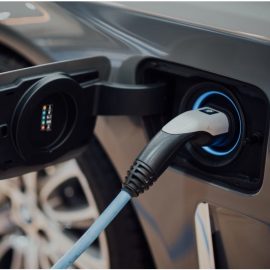

This article is an excerpt from the Shortform summary of "The Smartest Guys in the Room" by Bethany McLean and Peter Elkind. Shortform has the world's best summaries of books you should be reading.
Like this article? Sign up for a free trial here .
What did Enron do wrong, and what do Enron do that was illegal? And why does it still matter now?
You may have heard of Enron, a company that went bankrupt in 2001. But what did Enron do wrong? Amongst other things, Enron’s bad business practices, including dishonest accounting, led to its downfall. Learn the answer to the question “what did Enron do wrong” below.
What Did Enron Do Wrong?
The failure of Enron in the early 2000’s is one of the largest bankruptcies in US history. Shareholders were wiped out, and tens of thousands of employees left with worthless retirement accounts. The Smartest Guys in the Room recounts the rise and fall of Enron, and how the company constructed a massively complex accounting scandal that was doomed to failure.
Enron’s downfall is the predictable mixture of human greed, poorly structured incentives, and lack of sanity checks when everyone has their fingers in the pie. In smaller ways, we too are subject to the same pulls as Enron managers and employees. The warning – if we were put into the same situation, we might not have behaved any differently. The questions “What did Enron do wrong?” and “what did Enron do that was illegal?” have interested analysts for years.
1. Accounting practices that disguised the fundamentals
The root of Enron has to be the accounting tactics that enabled deception. But what did Enron do that was illegal? Accountants let Enron book more revenue than they actually earned; keep losses and debt off balance sheets. If these were disallowed, the money-losing state of Enron would have been apparent far sooner.
- Mark-to-market accounting allowed booking the total value of a deal immediately, rather than spaced out over time.
- Complicated SPE deals allowed Enron to borrow money while keeping it off their balance sheet
- One-time asset sales were booked as recurring revenue
- Deals that were actually dead were fictitiously kept alive to avoid a writedown that quarter
All this structure became so convoluted that no one totaled up the big picture. No one pieced together the dependencies between Enron’s deals, and how the dominoes would fall if Enron’s stock price fell.
2. Poorly constructed compensation structures that rewarded unprofitable behavior
A pattern of Enron’s compensation style was to reward short-term behaviors (like stock price or closing deal sizes) without concern for long-term value (like profitability). And according to the book’s author, Skilling happily fed greed, believing it was the best motivator for performance.
- Deal makers were given bonuses for the deal value when it closed, not on the generation of actual cashflow. With optimistic projections, deal makers got paid for bad unprofitable deals.
- Employees got bonuses for short-term stock prices, thus incenting bad behavior to prop up stock price.
- Senior managers like Skilling got large bonuses for stock performance. This prompted over-optimistic projections to Wall Street, which intensified the speed of rushing into bad businesses (Enron Broadband) and created end-of-quarter scrambles to make earnings.
3. Stakeholders/watchdogs overlooking bad behavior as long as they were profiting
Could people have raised the alarm at Enron earlier? What did Enron do wrong? People who could have stepped in and intervened didn’t, often because they had a large personal stake in Enron’s success. Further, the more Enron became a success (like in terms of stock price or deal flow), the more beholden the stakeholders were to Enron.
- Shareholders (employees and the public in general) didn’t look very hard, as long as the stock price rose and employees got bonuses. Why stop the party?
- Enron’s accountants (Arthur Andersen) couldn’t lose Enron as a client (Enron kept accountants waiting in the wings), so they tolerated their practices despite internal skepticism. Furthermore, Enron gave many Andersen accountants cushy jobs.
- Investment bankers earned large fees from Enron’s complicated deals, even when they knew they were skirting the intent of the law. Bankers who ran bigger deals got promotions. They competed for Enron’s business.
- Buy-side analysts at banks who were supposed to be independent were strongly pressured to give buy ratings, since companies would only work with positive banks.
- Short sellers were a useful counterforce, since they had a large incentive to expose wrongdoing.
4. Complex dependencies that required progressively bigger risks or face complete failure
Enron built layers of financial dependencies in a constant push to raise stock prices. In essence, it kicked the can down the road, hoping that salvation would come at some point.
- For example, Enron’s mark-to-market accounting might put the value of a 20-year deal down as recurring revenue in one quarter. Wall Street expected this to be real recurring revenue, which meant Enron had to book larger deals that had bad long-term prospects to keep up appearances.
Here was the nightmare scenario (that materialized):
- Enron’s stock price was high because of misleading accounting and overoptimistic projections.
- If Enron ever missed earnings, its stock price would fall.
- If its stock fell, its SPE deals would unwind (since they were predicated on Enron stock prices), causing Enron to have to book massive debt on its balance sheet or issue new shares. This would cause further stock price falls.
- This increased debt would cause a downgrade of Enron’s creditworthiness to junk status.
- This would trigger provisions in Enron’s debt agreements to pay back loans early, and trading partners to demand cash collateral.
- Since Enron didn’t actually have cash, its ability to pay would progressively worsen, causing trading partners to withdraw and further decrease revenue.
- This would cause bankruptcy.
This answers the question “what did Enron do wrong” when it comes to finances.
Remember: This Was All Done in the Open
Contrary to popular belief, many of these deals were not secret, but rather publicly revealed and boasted about.
Third parties internal (Arthur Andersen) and external (analysts) applauded the deals for their financial ingenuity. Banks participating in the deals earned large fees.
Fastow, who saw himself as a savior of the company, inappropriately participated in these deals himself, providing the 3% independent capital for the SPE. In Fastow’s view, these were “just commissions,” and Enron owed him for saving the day.
Enron’s Chief Accounting Officer Rick Causey was meant to keep Fastow in check, but he saw his job as facilitating Fastow’s transactions.
By the end, Enron owed $38 billion, of which only $13 billion was on its balance sheet.
So, what did Enron do wrong? In the end, multiple Enron executive were convicted for their fraudulent behavior. Asking “what did Enron do wrong” can help learn from their mistakes and make better decisions going forward.

———End of Preview———
Like what you just read? Read the rest of the world's best summary of Bethany McLean and Peter Elkind's "The Smartest Guys in the Room" at Shortform .
Here's what you'll find in our full The Smartest Guys in the Room summary :
- How Enron rose to become one of the world's most promising companies
- How Enron management's greed led it to start cutting corners
- The critical failures that crashed Enron's house of cards to the ground






